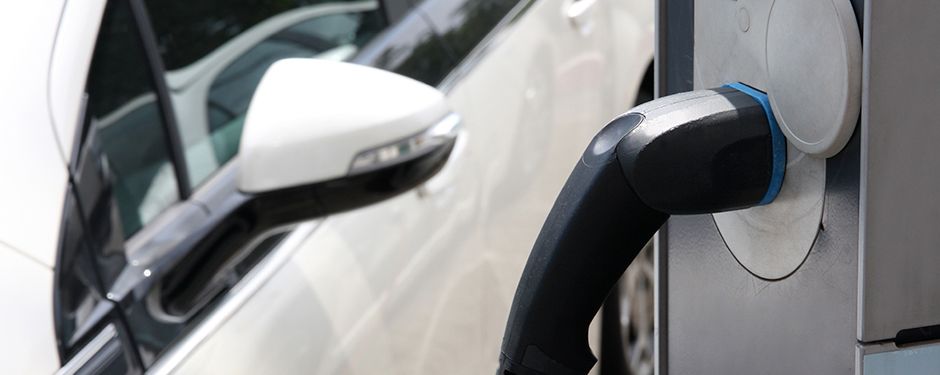Autonomous cars drive next-gen PCB material requirements
November 23, 2016
The automotive industry is in the midst of an exciting transition as it migrates away from cars with gas engines where the driver is completely in charge of safety to a future with autonomous cars that will not need a human driver. Truly driverless cars have not yet reached the mass market, and it’s still up for debate whether autonomous cars are safe, but systems that automatically activate the brakes when the car approaches another vehicle too rapidly are already a reality in commercial vehicles.
Cars rely increasingly on printed circuit boards (PCBs) with chips that control everything from safety to passenger comfort and convenience. Safety features may include a lane departure system, drowsy-driver alert system, blind-spot detection, and more. These systems require PCBs with an engine control unit, more communication modules, and cameras with image sensors, radar system, as well as multiple passive components. Inside the cabin, PCBs control navigation, entertainment systems, and the interior climate. The powertrain may require a PCB designed to improve fuel efficiency or to control battery charging in an electric vehicle.
In addition to increasing demand for electronics in cars, the automotive market as a whole continues to grow. Forecasts suggest that over 90 million cars will be sold globally in 2016. This means that the automotive market is a lucrative one that should not be neglected by PCB suppliers. The value of the automotive PCB market is in the neighborhood of $4 billion/year.
Automotive PCBs must often survive in more punishing environments than PCBs used in other applications, and reliability is paramount. Cars, and the electronics inside them, need to work reliably for many years. Automotive PCB makers need materials that not only survive, but also pass stringent thermal reliability tests that demonstrate long-term stability in such environments.
The substrate is the starting point for reliable PCBs used in automotive applications. Engine compartment PCBs need to withstand high temperatures and therefore require high-temperature co-fired ceramic substrates, which are typically made from alumina and aluminum nitride.
For safety systems, the substrate of choice is polytetrafluoroethylene (PTFE) reinforced with glass fibers, with additional copper cladding for some applications. The antilock braking system typically uses metal core PCBs. Crash avoidance systems that rely on radar require high-frequency PCBs, and PFTE meets this need.
Comfort systems have much less stringent requirements and tend to use standard PCB substrates. Taiwanese companies, led by Chin Poon, supply most of these PCBs. High-density interconnect (HDI) is becoming important, as infotainment systems become more complex and displays need to integrate more and more features, requiring more dense PCBs.
The power requirements of PCBs in hybrid, electric, and fuel cell cars are substantial. The industry is therefore migrating toward PCBs with much thicker copper that withstands the high-temperature, high-frequency, and high-current environment. As opposed to standard PCBs, where the copper layer may be between 25 and 50 µm thick, so-called heavy copper is in the range of 150 to 200 µm thick.
Copper-clad laminates (CCL) for automotive use have some especially stringent requirements. It is important for such PCBs to avoid conductive anodic filaments (CAF); defects in the dielectric can lead to shorts between the CCL and conductive traces. All of these properties lead to a PCB that will be reliable and dimensionally stable in an automotive environment.
Automotive PCB manufacturers want materials that will be compatible with the various types of equipment in their facilities and various process conditions, such as vertical as well as horizontal metallization processes. Dow has developed partnerships with major equipment suppliers, which allows us to better understand their requirements and create chemistry that will be compatible with the latest equipment.
Dow produces multiple swellers and electroless copper formulations for use in the metallization process for automotive PCBs. Selection depends on the Tg of the substrate, desired plating thickness, and processing time. New products go through reliability testing at customer sites before they are released commercially, providing assurance that they will perform as specified in real-world applications.
Our latest copper plating formulations are geared specifically for the trend toward thicker panels. They provide high throwing power for thick, multilayer boards with high aspect ratio through vias, while also being suitable for HDI designs with drilled microvias.
The growing size and complexity of the automotive PCB market makes it a great opportunity for PCB suppliers, but one where the reliability requirements dictate careful materials selection. Wise PCB makers will collaborate with vendors throughout their supply chain to ensure that the electronics in the next generation of smart and self-driving cars perform well.
Related Information

Silver Plating Technology Driving 200°C Automotive Apps
How we overcame technical challenges to develop a flexible, high-performance automotive solution.

Via Fill’s Role in the Evolution of Portable Electronics
Development of cellphone-technology-driven advances in semiconductor packaging and PCB design.

Printed Circuit Boards
DuPont brings a deep understanding of high-performing materials to enhance printed circuit board materials reliability for flexible and rigid boards.
We’re here to help.
We love to talk about how our electronics solutions can build business, commercialize products,
and solve the challenges of our time.